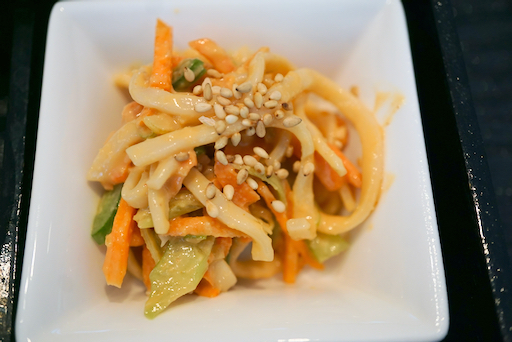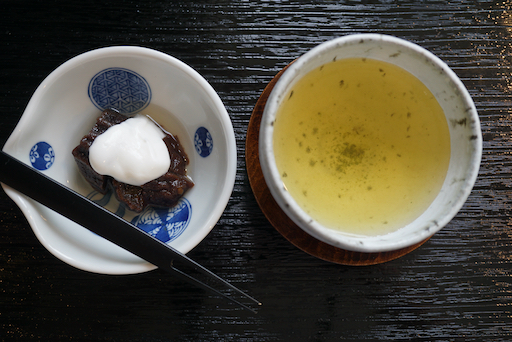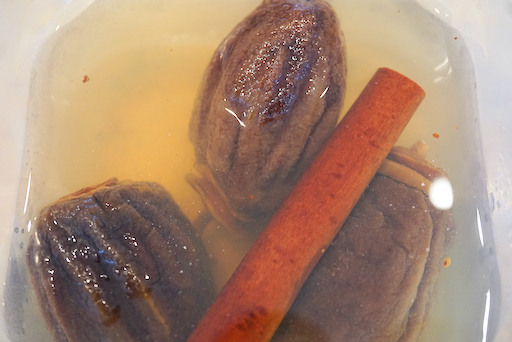*I thought I have not posted home-made Name-take but when I searched my blog I found two enoki mushroom dishes one is home-made name-take in 2011. I will list the recipe again for my own convenience. Nametake is most commonly available as a rice condiment in a jar.
** It may be spelled as “gingko”. We used to be able to get a small can of boiled ginko nuts but in recent years, it has disappeared. This may be due to the fact that ginko nuts contain a small amount of toxin called MPN, or 4'-methoxypyridoxin. If consumed in a large quantity, especially among children, could produce intoxication. We could harvest ginko nuts since ginko trees are around, the preparation (to remove the meat of the fruit) is messy and smelly which I am hesitant to do). Very recently, however, we could get boiled and packaged ginko nuts (China product) from Weee.
Nametake:
Ingredients: (the seasoning can be more stringer/salty (more soy sauce)
I package (200 gram) Enoki mushroom
2 tbs sake
1 tbs mirin
2 tbs soy sauce (or x4 concentrated Japanese “mentsuyu” noodle sauce
Directions:
Cut off the end of the enoki, cut in half, separate the bottom parts
Place it in a small pot and add sake on low heat with a lid on. After 5 minutes, stir to mix. The consistency changes and thickens. Add the seasoning and increase the heat, stir until no free liquid remains.
Imitating the commercial products, I put the home-made nametake in a jar (below) after sterilizing the inside of the jar with 50 proof Vodka.
Seasoned quail eggs: (I think we figured out how to boil and peel)
How to boil and peel the quail eggs
In a pan add enough water and boil. When the water started boiling, add small mount of cold water to stop rapid boiling and add the cold (refrigerated) quail eggs using a slotted spoon. Gently stir in first 1-2 minutes so that the egg yolks center. Cook in gentle boil for 4 minutes then soak the eggs in ice water (mixture of ice cubes and cold water).
After 10-15 minutes, make multiple cracks on the shell (I used the back of the knife) and put them back to the ice water for 10-15 more minutes.
Peel the shells using a thin stream of cold water could help peel the shells.
Marinading the eggs:
I simple marinate the eggs in x4 Japanese concentrated “Mentsuyu” 麺つゆ noodle soup. Alternetively mix equal amount of mirin and soy sauce as a marinade.
Before serving, I toaster oven for 5-6 minutes.
We like these small dishes. The quail eggs have delicate seasoning from the marinade and creamy yolk. The grilled ginko nuts with salt is unique texture and taste for autumn and a quintessential drinking snack in Japan.



















